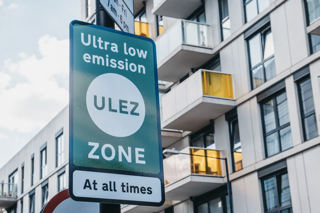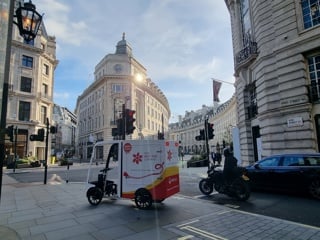Efforts to clean up the air in London appear to be paying off according to the latest figures revealed by the Mayor of London.
Data from air quality monitoring sensors around the Capital show a 97% reduction in the number of hours that air quality exceeded legal limits.
In 2019, London’s air quality exceeded the hourly legal limit for around 100 hours. This compares favourably to the 4000 hours recorded in 2016.
However, there are still many locations where pollution levels remain high - including for particulate matter - for example at the monitoring site in Vauxhall, which preliminary research indicates may be being impacted by a nearby ventilation shaft from the Tube.
The Mayor of London Sadiq Khan said: “Toxic air is a national health crisis contributing to thousands of premature deaths ever year. I have taken bold action in London with measures such as the world’s first Ultra Low Emission Zone and Low Emission Bus Zones, and it’s undeniable that these are making a difference to the air we breathe.
“We’re doing all we can in the capital, with proven results, so there are no excuses left for the Government’s failure to match our levels of ambition.”
Between 2004 to 2017, London breached the permitted number of exceedances for NO2 within the first week of the year. In 2019, only one site breached and it did not occur until July.
There have also been significant reductions in Londoner’s long-term exposure to air pollution, with every monitoring site in the capital recording a reduction in annual average NO2 levels. Londonwide, there has been an average reduction of 21% between 2016 and 2019.
Significant NO2 reductions have occurred where the Mayor has introduced Low Emission Bus Zones – areas where only buses that meet the cleanest emission standards can operate.
At Putney High Street in Wandsworth, NO2 levels have stayed within legal limits so far this year, compared to 1,279 hours of illegal levels in 2016.
At Brixton Road in Lambeth NO2 levels remained within legal limits for the entirety of 2019 and so far this year, compared to 530 hours above the legal limit in 2016. In 2017, this site saw London’s first breach of annual pollution limits just five days into the new year, and in 2018 it occurred within a month.
On Oxford Street in Westminster, NO2 exceeded legal limits for 168 hours in 2016. In 2019 monitors did not record a single hour above legal limits. However, there is also an annual average legal limit which Oxford Street did not meet, which is why further action is needed.





















Login to comment
Comments
No comments have been made yet.